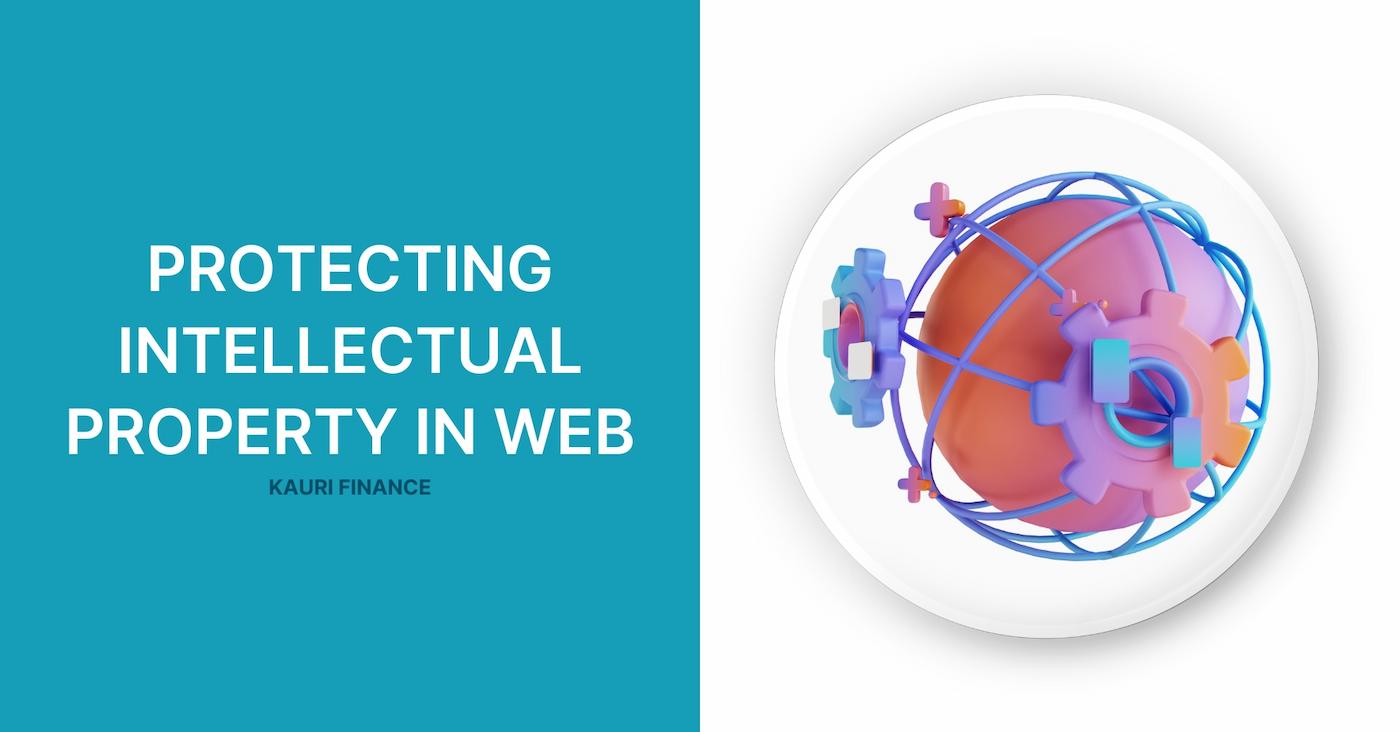
Protecting Intellectual Property in Web3

As we venture into the era of Web3, the decentralized web, the way we handle intellectual property (IP) is undergoing a transformative shift. Web3 introduces enhanced transparency, security, and user-centricity, which are pivotal for protecting the creative products of the mind in the digital age. This new landscape presents both opportunities and challenges for IP rights management, leveraging technologies like blockchain and smart contracts to safeguard creators' rights more effectively than ever before. In this Kauri Academy article, we explore the mechanics of IP protection in Web3, looking at innovative solutions, legal considerations, and practical strategies for protecting intellectual assets in a decentralized environment.
Definition of Intellectual Property in the Context of Web3
Intellectual Property (IP) refers to creations of the mind such as inventions, literary and artistic works, designs, symbols, names, and images used in commerce. In the context of Web3, IP encompasses digital assets that range from code to artwork, stored and managed on a blockchain. This definition extends to digital innovations and media that embody a person’s creativity and technical ingenuity, which can now be tokenized, traded, and tracked in ways that were not possible before.
Web3, characterized by its decentralized and peer-to-peer nature, fundamentally alters how IP rights are managed and enforced. Traditional IP frameworks often rely on centralized authorities such as governments or corporate entities to register, validate, and enforce IP rights. These systems can be slow, opaque, and sometimes inaccessible to individual creators or small businesses due to high costs and complex bureaucracies.
In contrast, Web3 introduces a decentralized approach where IP rights are managed through distributed ledger technology, namely blockchain. This technology provides several advantages:
- Transparency and Immutability: Every transaction and IP registration on a blockchain is recorded in a way that is transparent and immutable. Once an IP asset is registered on a blockchain, its creation date, ownership rights, and transaction history are permanently and publicly verifiable. This not only deters plagiarism but also simplifies the process of proving ownership in legal disputes.
- Decentralization: Unlike traditional systems where a single entity controls the data, blockchain distributes the data across multiple nodes. This reduces the risk of data manipulation and loss, while also preventing undue control by any single authority.
- Automation: Smart contracts automate transactions and the enforcement of IP rights. They execute predefined conditions without the need for intermediaries, thus speeding up processes and reducing costs. For example, smart contracts can automatically execute royalty payments once certain conditions are met, ensuring creators receive their dues without delay.
These transformative aspects of Web3 redefine the infrastructure around IP, making it more accessible, efficient, and equitable. This shift not only empowers individual creators by giving them greater control over their work but also fosters innovation by streamlining IP management and enforcement processes.
Blockchain's Role in IP Protection
Blockchain technology is pivotal in transforming IP protection with its inherent characteristics of immutability and transparency. Here’s how these features play a crucial role:
- Immutability: Once data is recorded on a blockchain, it cannot be altered or deleted. This ensures that any record of creation, modification, or transfer of IP rights remains unchanged over time, providing a tamper-proof chronicle of ownership and usage rights. This is critical for IP, as it eliminates disputes over origination and helps enforce legal rights.
- Transparency: Blockchain operates on a distributed ledger that is accessible to all participants and often to the public. Every transaction and its associated details (such as time, involved parties, and terms) are visible to anyone who accesses the system. This level of transparency helps reduce fraud and unauthorized use of IP, as any such activities are immediately visible and traceable.
Examples of Blockchain-Based IP Solutions
Blockchain's application in IP protection has led to the development of various solutions that leverage its capabilities to secure and manage IP rights more effectively:
- Proof-of-Existence: One of the earliest uses of blockchain for IP is the creation of proof-of-existence services. These services allow creators to upload a file (containing an artwork, manuscript, or software code) and receive a cryptographic digest of the file recorded on the blockchain. This action serves as immutable proof that the work existed at a certain point in time and belongs to the person who registered it. This is invaluable for copyright disputes where proving the timing of creation can be critical.
- AI Analysis for Authenticity: Integrating AI with blockchain provides a powerful tool for verifying the authenticity of IP assets. For instance, AI can analyze artistic works for unique features and compare these against a blockchain database to identify possible duplicates or infringements. This combination is particularly useful in industries like art and media, where duplication is common and potentially damaging.
- Blockchain-Based Patent Registries: Traditional patent systems are often slow and cumbersome. Blockchain-based registries, like those developed by companies such as IPwe, revolutionize this process by allowing for faster, transparent, and cheaper patent registrations. These registries use blockchain to maintain a decentralized database of patents, where each entry is time-stamped and linked to previous records. This not only speeds up the patenting process but also makes it easier to search for existing patents and assess their validity.
Smart Contracts and IP Enforcement
Smart contracts are self-executing contracts with the terms of the agreement directly written into code. In the realm of intellectual property, smart contracts can automate various aspects of IP rights enforcement:
- Automated Licensing: Creators can use smart contracts to issue licenses for their work. These contracts can specify terms under which others may use the IP and automatically enforce those terms, ensuring that any use outside the agreed parameters is either blocked or penalized.
- Royalties Distribution: Smart contracts can also automate the distribution of royalties, ensuring that creators receive compensation automatically when their work is used. This is particularly effective in industries like music and digital art, where tracking usage and ensuring fair payment have traditionally been challenging.
These automated mechanisms significantly reduce the administrative burden on creators and help prevent unauthorized use of intellectual property, making the enforcement process more efficient and less susceptible to human error.
Practical Strategies for IP Protection in Web3
In the decentralized landscape of Web3, protecting intellectual property requires proactive strategies:
- Blockchain Registration: Registering IP on the blockchain provides a secure, immutable record of ownership and creation date. This can be crucial in establishing prior art in disputes over originality or ownership.
- Encryption and Watermarking: To protect digital assets, creators can use encryption to secure their data against unauthorized access. Watermarking, both visible and invisible, can also be employed to embed ownership information directly into digital files, making it easier to identify and act on unauthorized reproductions.
Tools and Platforms for Monitoring and Defense
Several tools and platforms have been developed to help creators monitor and defend their IP rights in Web3:
- Blockchain Analytics Tools: These tools scan blockchain transactions to identify potentially infringing activity involving registered IPs. They can alert creators to unauthorized uses, enabling quick action to enforce rights.
- Digital Monitoring Services: Similar to traditional digital rights management systems, these services use advanced algorithms to monitor the internet (including decentralized networks) for IP infringements. They can automatically enforce removal requests or legal actions through integration with blockchain networks and smart contracts.
- Decentralized Applications (DApps): Several platforms allow for decentralized management of IP. For example, OpenLaw and InvArch enable users to manage legal agreements and IP registration using blockchain and smart contracts, simplifying the legal complexities often associated with IP management.
Conclusion
The advent of Web3 introduces robust mechanisms for intellectual property protection, leveraging blockchain technology and smart contracts to enhance transparency, security, and efficiency. These tools automate IP management and facilitate fair royalty distribution, empowering creators and simplifying legal processes.
For those navigating this new terrain, continuous learning is essential. Kauri Academy offers valuable resources to deepen your understanding of IP protection in Web3. We encourage you to explore these resources to effectively safeguard your creations and thrive in the decentralized digital landscape. Embrace the opportunities Web3 offers by engaging with Kauri Academy's educational offerings today.
